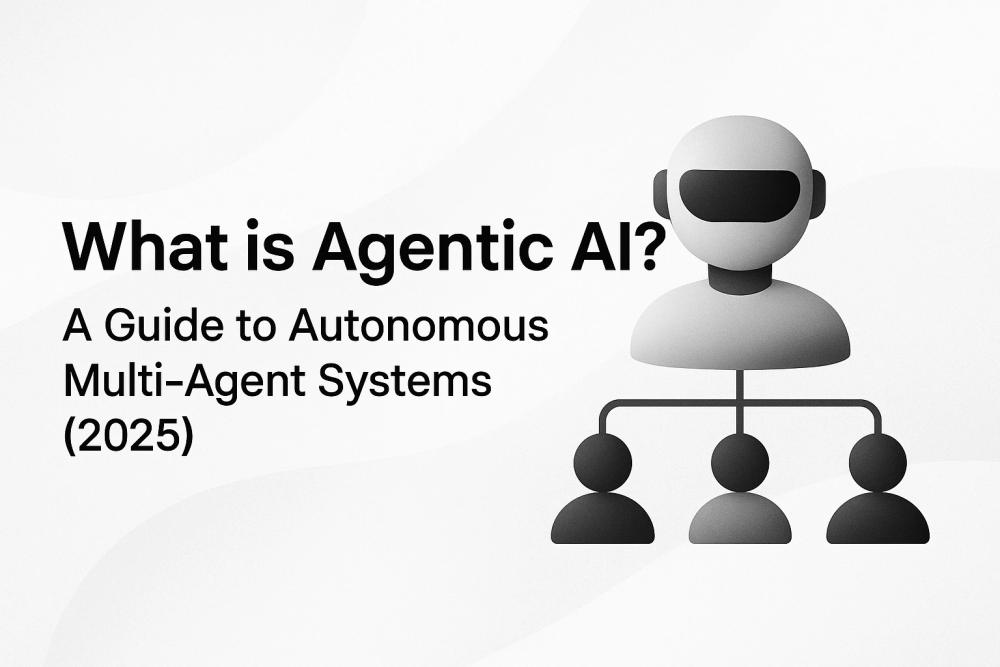
The Ultimate Guide to AI Agents (2025)
2025/06/05

A deep dive into Multi-Agent System (MAS) architectures. Learn how AI teams communicate and collaborate through hierarchical, decentralized, and blackboard models.
A battle-tested full-stack engineer with extensive hands-on experience in building products, navigating failures, and achieving success. James shares his real-world journey of entrepreneurship, exploring side hustles, and developing go-to-market strategies.

2025/06/05

2025/06/25

2025/06/25

2025/06/26

You've built a 'crew' of agents that follows a process. You've seen how a 'group chat' of AIs can solve a problem. But have you ever wondered why they are designed so differently? What are the fundamental blueprints that govern how these AI "teams" collaborate?
Welcome to the next level of understanding. This guide moves beyond specific frameworks to explore the core architectural patterns of Multi-Agent Systems (MAS). We will dissect how AI teams are structured, how they "talk" to each other, and the critical trade-offs between different models. Moving from a user of agentic frameworks to an architect of agentic systems starts here.
This guide focuses on architectural theory. To review the foundational concepts of Agentic AI, please see our Deep Dive into Agentic AI Pillar Page.
At a glance, a Multi-Agent System might resemble a modern microservices architecture—multiple components working together. However, a crucial distinction sets them apart. While microservices are passive and only act when called, the components of a MAS—the agents—possess two defining characteristics:
In essence, a microservices architecture is a well-organized factory of passive workers waiting for instructions. A Multi-Agent System is a dynamic office of proactive employees collaborating on a project.

For a team of agents to collaborate, they must first overcome the "Tower of Babel" problem—they need a shared language. This is achieved through Agent Communication Languages (ACLs).
Historically, standards like the FIPA-ACL (Foundation for Intelligent Physical Agents - Agent Communication Language) were developed to solve this. Think of it as the "Latin" or "TCP/IP" of agent communication. It's not about the content of the message itself, but the intent behind it. It uses "performatives" to structure conversations, such as:
request: Asking another agent to perform an action.inform: Stating a fact.propose: Making a proposal as part of a negotiation.agree: Agreeing to a proposal.In the era of Large Language Models (LLMs), communication has become more flexible. While the principles of FIPA-ACL are still relevant, the implementation often involves agents exchanging messages in a structured format like JSON or XML, guided by a predefined schema. This allows an LLM-powered agent to easily parse the "intent" and "content" of a message from another agent and act accordingly.
How you organize your "AI team" has a massive impact on its performance, scalability, and problem-solving ability. There are three classic architectural blueprints.

These theoretical blueprints directly inform the design of the open-source frameworks you use today.
*CrewAI's* process-oriented structure, especially when using Process.sequential, is a clear implementation of the Hierarchical Model. You define roles and a clear, predictable workflow, much like a manager assigning tasks down a chain of command.
AutoGen's Group Chat functionality, where agents converse and debate to find a solution, perfectly embodies the spirit of the Decentralized Model. The GroupChatManager acts as a facilitator for this democratic, peer-to-peer discussion rather than a top-down commander.
Understanding this fundamental difference explains why these tools feel so different in practice and are suited for different kinds of problems, as we explored in our CrewAI vs. AutoGen Practical Guide.
Moving beyond using off-the-shelf frameworks to designing your own agentic systems requires thinking like an architect. The choice of architecture—hierarchical, decentralized, or blackboard—is the most critical decision you will make. It dictates how your AI team will communicate, coordinate, and ultimately, how effectively it will solve the problem you've set for it.
There is no single "best" architecture; there is only the right architecture for the job. Is your task a predictable production process or an open-ended research question? Your answer will determine the blueprint for your digital workforce.
As you explore the diverse tools on the Agent directory, try to identify which architectural principles they might be using under the hood. This deeper understanding will make you a far more effective builder and user of AI technology.